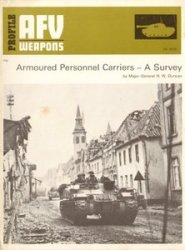PLANEMASTERS, LTD.: Dupage Airport, West Chicago, Illinois, 60185, United States; Phone (630) 513-2100; Fax (630) 377-3283; Year Founded 1970. Planemasters, Ltd. is established as a fleet management concern in 1970. During the late 1980s, the decision is taken to not only provide equipment to others, but to provide FAR Part 135 charters of its own under the name Planemaster Services. Revenue services duly begin and in 1989 the company operates 1 owned Beech King Air 90, along with 2 leased Cessna 208 Caravan Is and 3 C-208Bs. One leased C-208 is removed in 1990.
Another chartered C-208B is acquired in 1992 followed by a fifth in 1996. John McHugh is president in 1997-1999 and all-cargo charter services continue to be operated by 6 Caravan Is.
Meanwhile, in addition to the original King Air 90, the remainder of the fleet has grown to include 2 each IAI-1125 Westwind Astras, Cessna 500 Citation Is, C-525 Citation Jets, and Beech King Air 100s, as well as 1 each C-501 Citation I/SP, C-550 Citation II, and Beech King Air 90A.
While taking off from Warsaw, Indiana, on a Part 135 cargo flight to Jeffersonville, on January 19, 2000, a Cessna 208B notices a snow plow coming toward him on the runway. Unable to either abort or keep flying, the pilot immediately puts the plane back down and impacts the airport perimeter fence, coming to rest on a railroad track embankment. Although the aircraft is badly damaged, the flyer is able to walk away.
PLANET AIRWAYS: 1050 Lee Wagener Blvd. Fort Lauderdale, Florida 33315, United States; Phone (954) 359-8600; Year Founded 1997. Planet Airways is founded by Peter Garrambone and Orlando entertainment mogul Louis Peariman in the summer of 1997. On September 25, an application for an operating certificate as a public interstate charter airline is filed with the DOT.
The actual start-up process develops slowly, with expensive hearings and petitions between company lawyers and the government consuming most of the next two years. Certification is finally received on December 15,1999.
In February 2000, arrangements are completed for the acquisition of a hush-kitted Boeing 727-23, as two more trijets are sought and Tony De Camillis becomes president. Chairman Garrambone informs the press that the company will go public later in the year to acquire the capital needed to acquire a travel agency and to expand the jetliner fleet.
During the summer, the carrier still has only one Boeing, without titles, which it flies on a subservice for Air D’Ayiti, S. A. between Miami and Port-au-Prince. Arrangements are, however, completed for the purchase of two B-727-224As.
It is reported in early October that the airline has painted its B-727-23 in full colors and applied titles.
When Planet is unable to receive its second B-727, a Dash-224A, as scheduled on December 1, it leases the former “Bush-Cheney” B-727-225A campaign plane from Miami Air International.
PLAS (PRIMERA LINEA AEREA SANTAFECINA, S. A.): Argentina (1958-1965). PLAS is formed at Santa Fe in 1958 to fly roundtrip third-level service to Buenos Aires via Rosario with 2 used Lockheed Model 10E Electras and 2 Model 18 Lodestars leased from Norsur (Compania Argentina de Aeronavegacion, S. A.). Before the end of the year, the carrier enters into a cooperative agreement with ALA (Aerotransportes Litoral Argentina, S. A.), which promises to provide support and access to several of its routes into the northeastern part of the country. The carrier is liquidated in 1965 after ALA elects to join forces with Austral Airlines (Compania Argentina de Trans-portes Aereos, S. A.).
PLATINUM AIR CHARTER EXECUTIVE JET, LTD.: Operations Building, RAF Northolt, West End Road, Ruislip, Middlesex, England, HA4 6NG, United Kingdom; Phone (020) 8842 4400; Fax (020) 8845 5667; Http://www. platinumair. com; Year Founded 2000. Platinum Air is established in July 2000 and is the first air taxi and air charter concern to operate from the Royal Air Force Base Northolt, located N of London (LHR) on the A40 motorway. A mixed fleet of 4 British Aerospace BAe Jetstream 31s, 1 Cessna Citation II biz jet, and 1 each Beech King Air C90 and Beech Super King Air 200.
Premium Service charters commence on August 21 to a number of European destinations, including Amsterdam, Geneva, Nice, Paris (CDG), Frankfurt, Milan, Malaga. Cargo and express service is also available.
PLUNA (PRIMERA URUGUAYAS DE NAVEGACION AEREA, S. A.): Colonia 1013-1021, Casilla de Correo 1360, Montevideo, Uruguay; Phone 598 (2) 930 273; Fax 598 (2) 921 747; Http://www.
Pluna. com. uy; Code PU; Year Founded 1935. Local Montevideo investors, led by Alberto Jorge Marquez and his brother, create this carrier in September 1935. Orders are placed for British-made aircraft and the first two aircraft received are de Havilland DH 90 Dragonflies. Christened Churrinche and San Alberto, they inaugurate service from Montevideo to Artigas and Rivera on November 20, 1936.
The first government subsidy, ?6,000, is received in November 1937 and is employed as a down payment on two ex-British Airways, Ltd. (1) DH 86s, which are received in 1938. They are named Santa Rosa de Lima and San Felipe y Santiago and are placed on the domestic frequencies.
Service is maintained during 1939-1940 and in 1941 the fleet is strengthened through the addition of an ex-Air France Poetz 621. The government passes legislation in January 1943 requiring a reorganization of the airline that gives the state 49% interest. In February, the January law is set aside, but the carrier’s subsidy is ended. On March 15, PLUNA ceases operations.
PLUNA is reborn on September 15, 1945. Capitalized at one million Uruguayan pesos (UP) or $500,000, its major shareholder is the government (83.5%). Two former Pan American Airways (PAA) Douglas DC-2s and four ex-USAAF C-47s (military DC-3) are acquired and placed in service. Additional C-47s are received in 1946 and converted to DC-3 civil standard.
Capitalization is increased to UP9 million on December 9, 1947 and the government’s shareholding is increased to 94.4%. A DC-3 begins the carrier’s first international service on May 4, 1948, flying to Porto Alegre, Brazil. Frequencies are maintained in 1949-1950. The remaining private shares are acquired by the government in 1951 and orders are placed for four de Havilland DH 114 Herons. Service is launched to Asuncion via Salto.
The Herons enter service in 1953. Orders are placed for three Vickers Viscount 769Ds in 1955. In 1956, thrice-daily DC-3 services are started to Buenos Aires and weekend flights are offered to the resort of Puente del Este. The Viscounts begin service in 1958, gradually replacing the Herons, which are sold in England over the remainder of the decade.
The Viscounts are placed on the Buenos Aires shuttle in 1961. PLUNA’s only fatal accident occurs on October 9, 1962. While taking off from Carrasco Airport for a test flight, a DC-3 with 10 crew crashes; there are no survivors.
Two (later three) ex-Alitalia, S. p.A. Viscount 745s join the fleet in 1967 and late in the year, the company takes over CAUSA, its aircraft, and route network. In 1968-1969, the fleet is altered to include four Viscounts, two Fokker F.27s, and two leased Fairchild Hiller FH-227s (modified American-made F-27s). In December of the latter year, a new Boeing 737-A3 is acquired from its manufacturer. It is painted in a bright orange livery.
Currency and other economic difficulties cause severe problems in 1970-1972, not the least of which is suspension of the Rio de Janeiro and Sao Paulo routes.
The three Viscount 769Ds are sold and enplanements in 1973 are only 119,200. Airline employment in 1974 is 427. In order to concentrate greater effort on the Buenos Aires route, PLUNA is now made responsible only for international services. Domestic flights are turned over to the Air Force’s transport squadron Transporte Aereo Militar Uruguayano (TAMU), along with the Fokkers and Fokker-Fairchilds. The fleet flagship B-737-A3 is sold to the Honduran airline TAN (Transportes Aereas Nacionales, S. A.), which promptly repaints it.
Passenger boardings soar 60% to 298,000 and freight traffic skyrockets by 100%.
A Vickers Viscount 769D with 5 crew and 52 passengers, goes off the runway upon landing at Buenos Aires on May 11, 1975; there are no serious injuries reported.
Although three former VASP Brazilian Airlines, S. A. Viscount 827s are added, loss of the domestic network causes bookings to adjust downward, dropping to 290,000.
The workforce in 1976 is 544. The fleet now includes 2 Viscount 745Ds and 3 Viscount 827s. Passenger boardings remain level at 290,000, but cargo increases 72.4%.
Two additional Viscount 745Ds join the fleet in 1977. While on final approach to Salto-Nueva Hesperided on June 20, an EMB-110C with 2 crew and 13 passengers flies too low, strikes trees in an orange grove, and crashes (5 dead).
In November 1978, two Boeing 727-30QCs are purchased from Deutsche Lufthansa, A. G. Bookings remain level.
The three Viscount 827s are retired in 1979. Passenger boardings jump 82.6% to 356,672 and cargo skyrockets 185%.
The workforce in 1980 totals 487. Bookings dip 1.8% to 350,200, and freight drops 4.2% to 704.8 million FTKs. The fleet is increased in 1981 through the addition of three B-727-2A3As and the retirement of all remaining Viscounts.
Enplanements still decline, however, to 332,097, due largely, as in the previous year, to increased fuel bills and the world economic recession.
The employee population in 1982 is 836, a 0.7% boost. A B-707-387B is chartered from Aerolineas Argentinas, S. A. to open a single, weekly international service from Montevideo to Madrid.
As the result of the opening of 2 river bridges between Uruguay and Argentina, passenger boardings fall 12.5% to 256,000 and freight is off 1% to 1.04 million FTKs.
Airline employment in 1983 falls to 823. One B-727-30QC is retired. Bookings drop another 7.1% to 231,317, but cargo is up by a very healthy 45.2% to 1.52 million FTKs.
Only five new employees are hired in 1984 and the second B-727-30QC is sold. It is replaced with three new B-737-2A3As. Passenger boardings jump 5% to 252,000 and freight rises 27% to 1.94 million FTKs.
The workforce is increased 2.9% in 1985 to 851 and a second B-707-387B is leased from Aerolineas Argentinas, S. A. An agreement is reached with Transavia Holland, N. V. to lease one B-737-2A3A every summer.
Freight drops 5.4% to 1.83 million FTKs, but enplanements rise 2.3% to 255,000.
Four employees are laid off early in 1986 as the carrier encounters significant financial and administrative difficulty. Still, a ground handling joint venture begins with Aerolineas Argentina, S. A. on the Mon-tevideo-Buenos Aires shuttle.
Traffic figures are released through June showing a 12.1% increase in passenger boardings to 151,720 and a 13.3% increase in freight 1.1 million FTKs. In October, PLUNA negotiates a management contract with Ansett Airlines of Australia (Pty.), Ltd.
Operations continue apace in 1987. In March 1988, an agreement to integrate routes is signed with LAB (Lloyd Aero Boliviano, S. A.) and LAP Paraguayan Airlines, S. A. Discussions commence with Iberia Spanish Airlines (2) (Lineas Aereas de Espana, S. A.) in September aimed at the possible acquisition of shareholding by the Spanish flag carrier. The company’s B-707-387B is banned from the Montev-ideo-Madrid route on December 31 for lack of a hush kit.
In 1989, the fleet includes 1 leased B-707-387B, 1 owned B-707-387B, and 3 owned B-737-2A3As.
In 1991, a B-737-2A3A is chartered to Transavia Airlines, N. V. of Holland and a Douglas DC-8-61 is leased. The company plans privatization and discourages the formation of new domestic carriers. In March, a joint venture agreement is signed with VASP Brazilian Airlines (Viacao Aerea de Sao Paulo, S. A.); employing two leased DC-10-30s, the Brazilian carrier undertakes international flights for the Uruguayan line from Montevideo to Miami and Madrid.
The DC-8-61 is returned in 1992, the B-707-387B is retired, and the year-old joint service with the Brazilian airline ends. Still, the DC-10-30s are retained on lease and operates to the previous destinations plus Rio de Janeiro.
Enplanements this year total 448,840 and revenues are $68.2 million. Expenses are higher and there are losses: $43,133 (operating) and $8.6 million (net).
The Dutch return the carrier’s “Baby Boeing” in 1993. Chairman Gustavo Cola Cancela’s 904-employee company provides scheduled passenger and cargo services from Montevideo to Asuncion, Buenos Aires, Porto Alegre, Punta del Este, Sao Paulo, Rio de Janeiro, and Santiago de Chile. With the removal of the Stratoliners, PLUNA now enters into a contract with Spanair, S. A. for flights to Madrid from Montevideo, employing the latter’s B-767-3Y0ERs.
During the year, the government seeks to privatize the carrier. In October, it announces that, of its four prequalified bidders, only a consortium led by VASP Brazilian Airlines (Viacao Aerea de Sao Paulo, S. A.) has not dropped out. VASP’s bid to acquire 51% majority ownership is rejected by the government, which pledges to attempt to privatize the airline again in the new year.
Passenger boardings for the year jump 15% to 528,047 and freight climbs 1.9% to 5.52 million FTKs.
During the spring of 1994, the government again welcomes bids for the privatization of the airline. Only an international consortium created by the Argentine corporation Tevicom Fapeco and the local Uruguayan investors Cipreses and Roberto Cobelli makes an offer: $2 million in cash and an assumption of $20 million in liabilities in exchange for 51% share capital.
Once the offer is accepted in July, the new partners retain VARIG Brazilian Airlines (Viacao Aerea Rio-Grandense, S. A.) as a management partner, without investment; the Brazilian major agrees to transfer over a pair of DC-10-30s, in a new color scheme, with which PLUNA can resume its long-haul international frequencies.
Enplanements fall to 499,079. Although there is a $5.45-million operating profit, a huge $16.39-million net loss is taken.
The workforce is reduced by a dramatic 52.5% in 1995 to 485. Customer bookings fall 4.7% to 476,676 and 3.6 million freight FTKs are operated. Revenues swell 7.5% to $65.6 million and costs fall a slight
0.4% to $55.34 million. Operating gain doubles to $10.26 million and the net loss is cut to $12.04 million.
Markets visited from Montevideo in 1997 include Asuncion, Buenos Aires, Madrid, Melo, Paysandu, Porto Alegre, Rio de Janeiro, Santiago de Chile, Sao Paulo, and Tel Aviv.




 World History
World History









